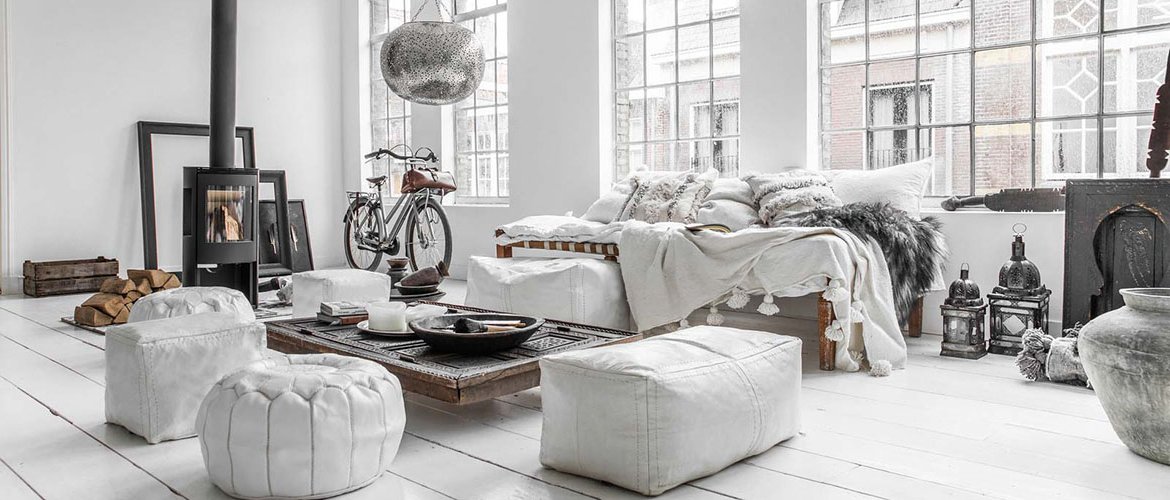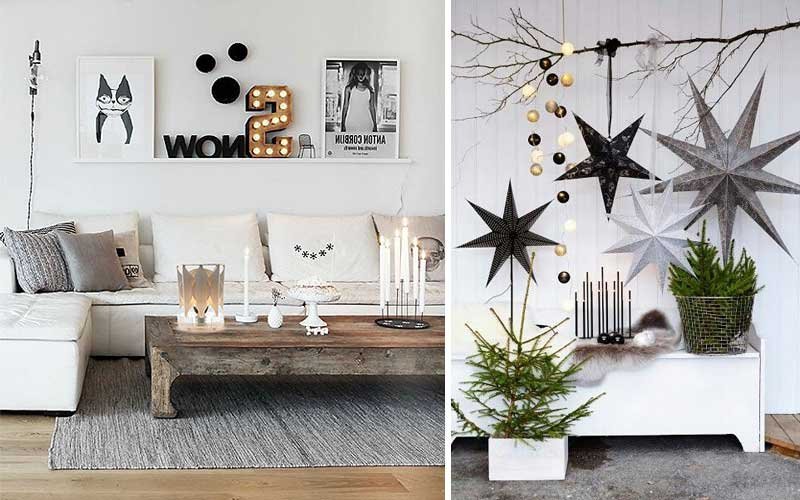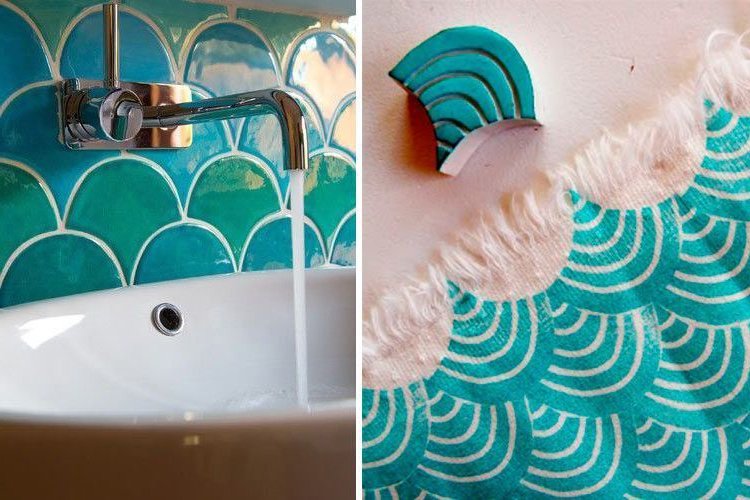The wonderful charm of the Japandi style
If you are one of those who come home looking for peace and tranquility, probably Japandi, that wonderful mix between Nordic and Japanese style, is the one that best suits you to achieve that calm.
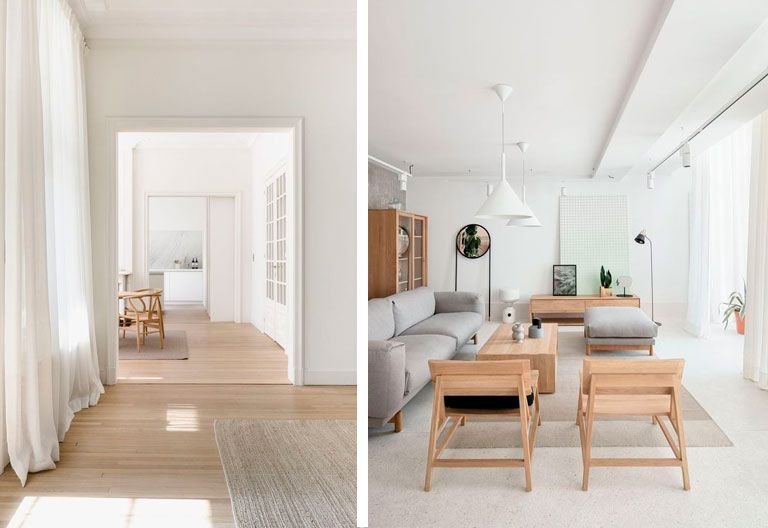
If you want to decorate your house in Japandi style and do not start from scratch, it is likely that you can not make a radical change, but you can achieve it gradually, starting with the furniture and accessories, to continue later with painting walls, floor materials and other coatings.
But before we dive in, let's see what are the main characteristics of this decorative style.
Where does the name come from?
The Japandi style is a perfect mix between Japanese and Scandinavian styles and its name comes from the sum of "Japan" and "Scandi".
It is a fusion that results in bright and timeless environments but with a warmer and more elegant touch than the traditional Nordic style.
What are its main characteristics?
With the Japandi a zen state is sought, so it will be necessary to discard the accumulation of furniture and complements and, of course, it will require to be very tidy.
Minimalism and lightness of furniture and accessories are its leitmotiv, bringing us closer to the tranquility that defines this style.
Let's take a closer look!
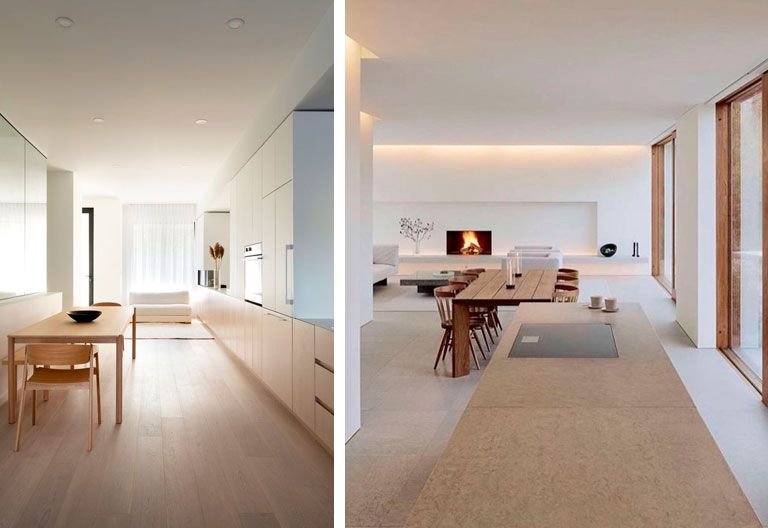
Materials and color range
To recreate this style we will have to bet on natural materials.
Medium-toned woods are a must in Japandi interiors, somewhat darker than in the traditional Nordic style.
In addition, materials such as jute, wicker or rattan, stone, ceramics, bamboo and, occasionally, leather are also used.
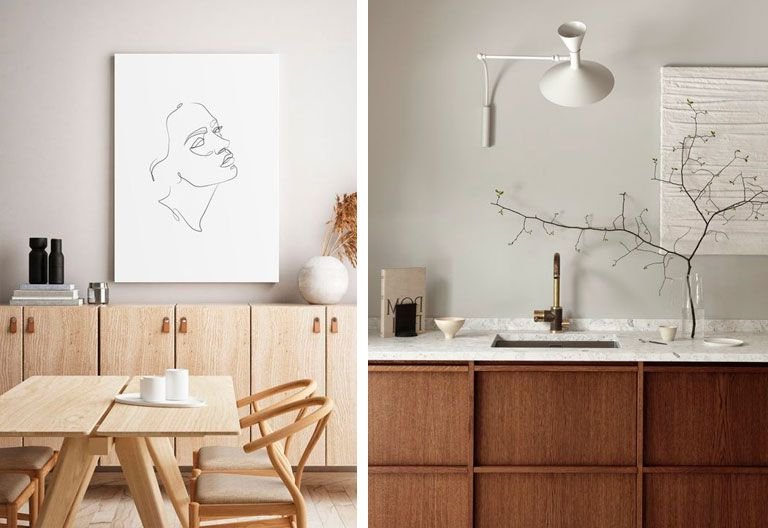
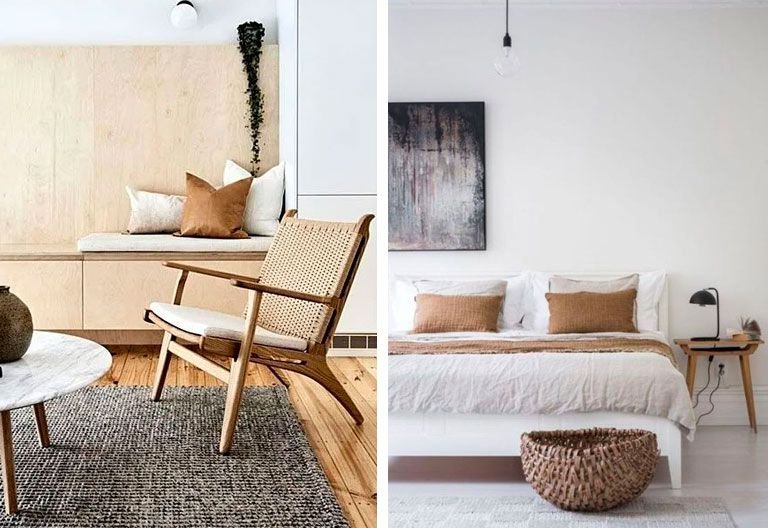
The predominant chromatic range is of neutral tones. The colors are always soft and muted, with some powdered and natural tones such as beige, sand and very light grays.
In general, the chromatic range exudes softness and lightness and that is why, in no case, we will see in this style colors such as snow white or bright and colorful shades.
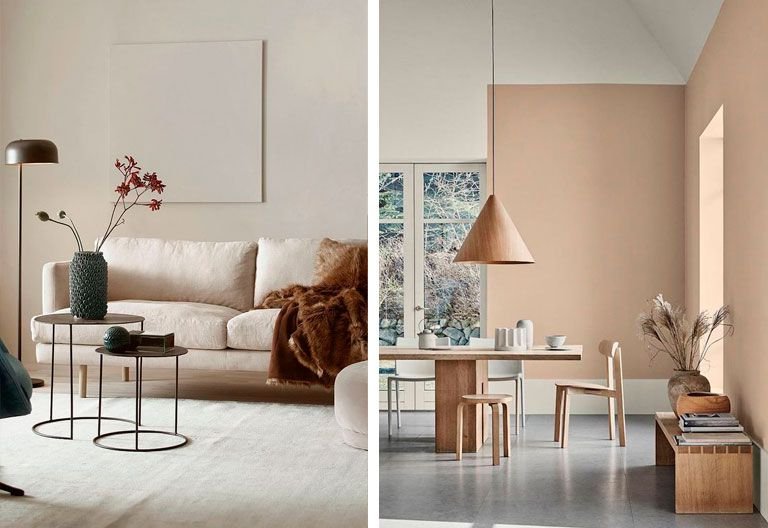
Furnishings with pure and simple lines
Like the container, the content has to be simple. That is why the furniture is of simple and clean lines, well chosen and functioning almost as a decorative object.
In this sense we can find sofas with neutral upholstery, Nordic wooden chairs or combined with plastic seats, rectangular and round dining tables with pure lines and also in wood, as well as simple auxiliary furniture without stridency.
In addition, from the Japanese influence, there is a taste for low furniture, so it is normal to find low beds, low tables and stools and decorative consoles close to the floor.
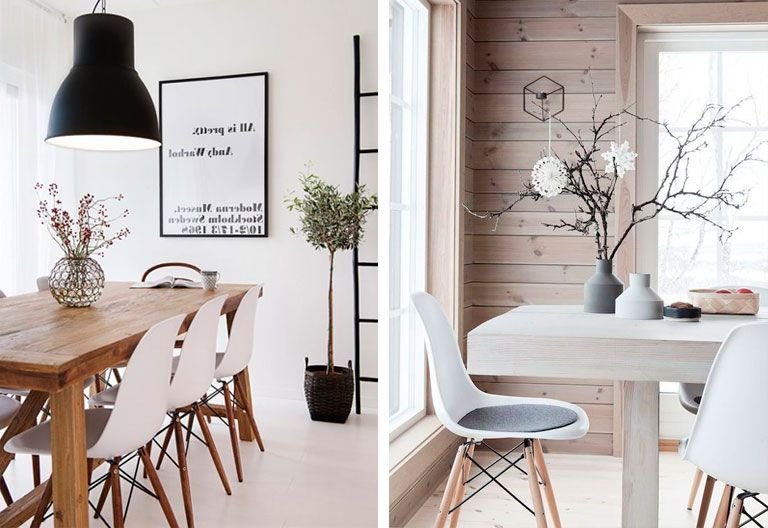
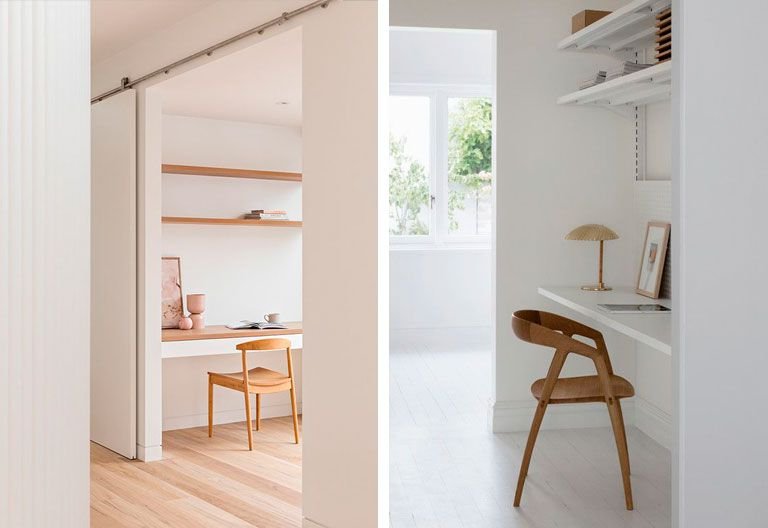
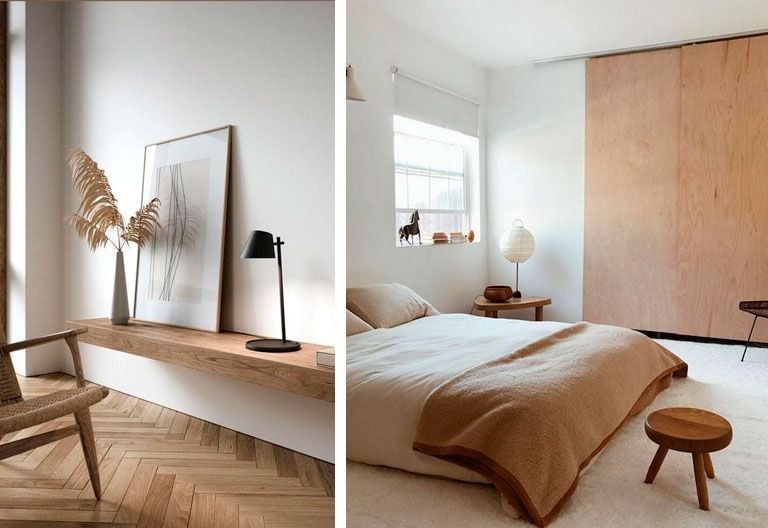
Decorative touches that define the style
The complements
The styling of the Japandi style is characterized by the use of the color black in brushstrokes.
We can see loose touches in table lamps or sconces, in vases, in small auxiliary furniture or even in the set of dining chairs, but it will never be a great mass of predominant color.
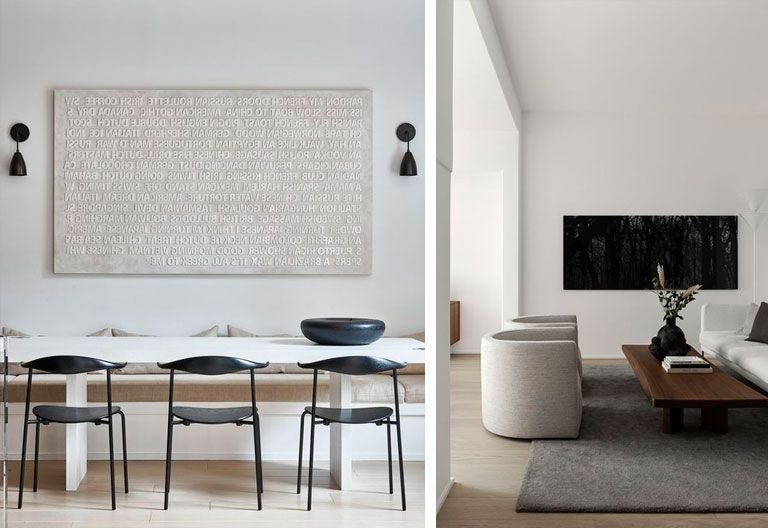
Walls are rarely decorated, and when they are decorated, it is done with abstract prints in which color is not abundant.
They are usually large format and finely framed, giving prominence to the print and following its simple line.
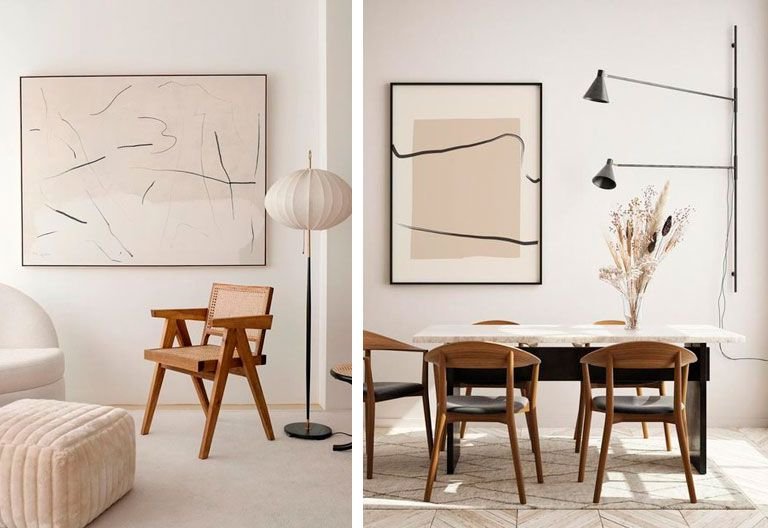
The accessories are few, but their choice is very thoughtful, based on everyday elements.
Thus, although it may seem that the decoration is based on simple vases chosen at random, the reality is that their choice is very careful.
To begin with, its design must have simple and organic lines, where craftsmanship can be appreciated.
Its material is usually ceramic and therefore its colors are neutral, as is the case with the rest of the decoration.
In general, as mentioned above, the styling is usually based on everyday elements such as crockery, vases, teapots or plates.
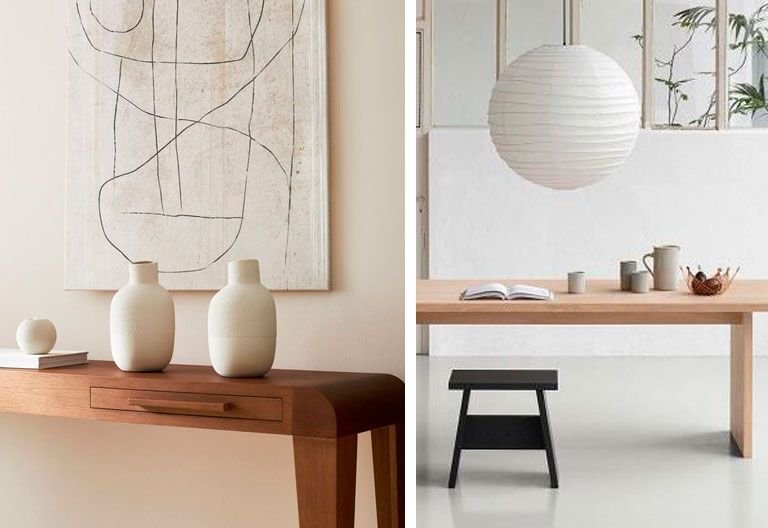
Lighting
When it comes to lighting in Japandi style, the Japanese influence wins the day, as paper lamps are the main choice.
It is common to see hanging, table and floor lamps made of this material, which provides a very warm and cozy artificial lighting.
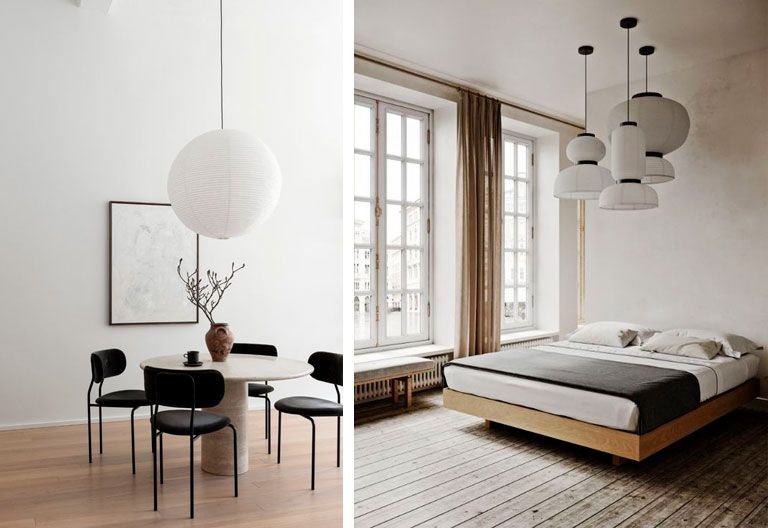
However, it is also common to use indirect light based on LEDs or some small lamps in black metal and sendillas lines, mainly pendants or sconces coming out of the wall.
Plants
Regardless of the decorative style that we intend to capture, we all know that a plant always looks good, and the Japandi style was not going to be an exception.
In this case the presence of plants serves to accentuate the decoration. Having few decorative elements, the green of the plants stands out and contributes its grain of sand as far as warmth is concerned.
We can see medium-large leafy plants or, on the contrary, Japanese Ikebana-type floral arrangements based on twigs, herbs and subtle and simple flowers.
Both options are equally valid and can be combined in the same space.
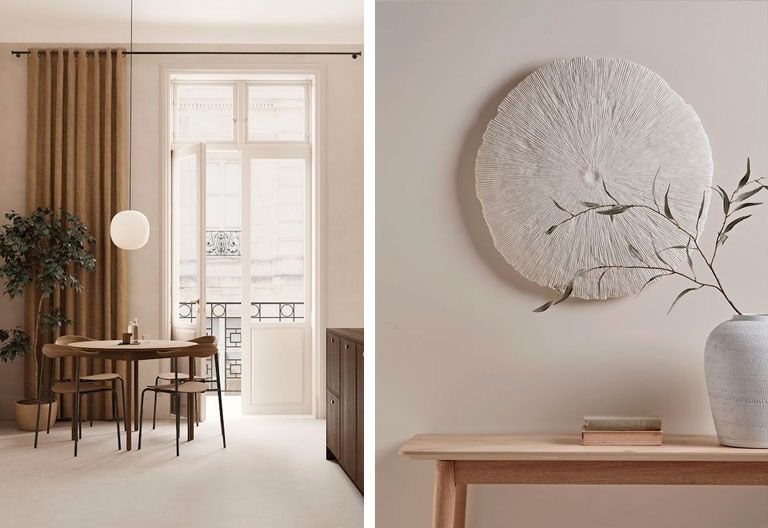
Ideas to apply this style little by little
As we said at the beginning of the post, to make the transition to this style gradually, we can do it in the following way.
To begin with, renew your small furniture. You can start by acquiring Nordic chairs, stools, benches and armchairs that you can place in kitchen islands, dining rooms, living rooms and offices.
Their design is very characteristic and they also look good in other styles, so the transition will be easier.
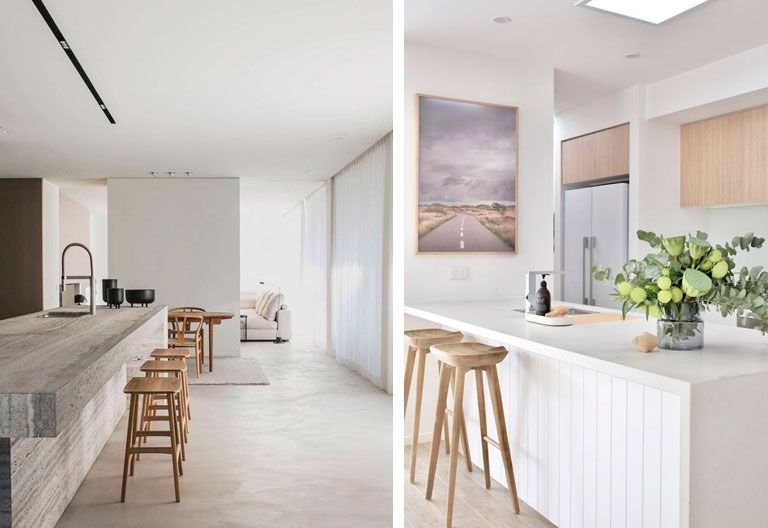
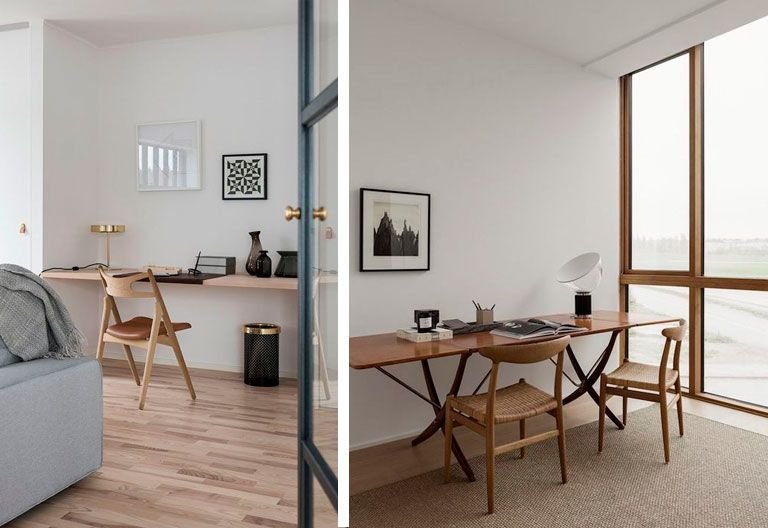
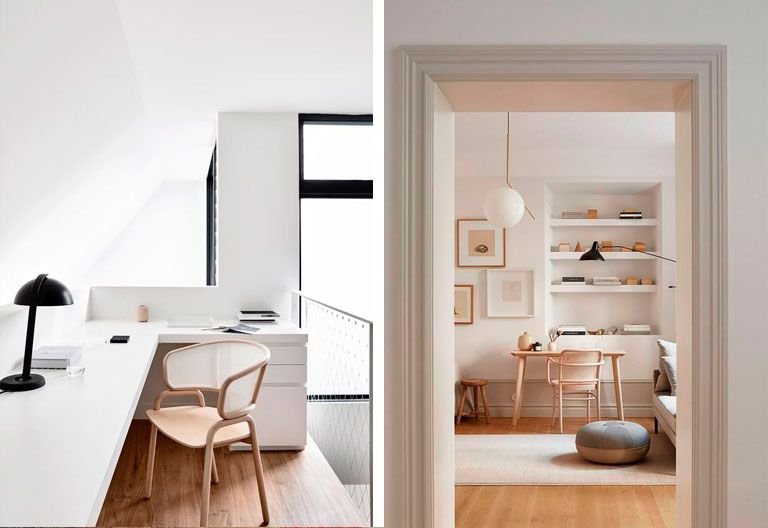
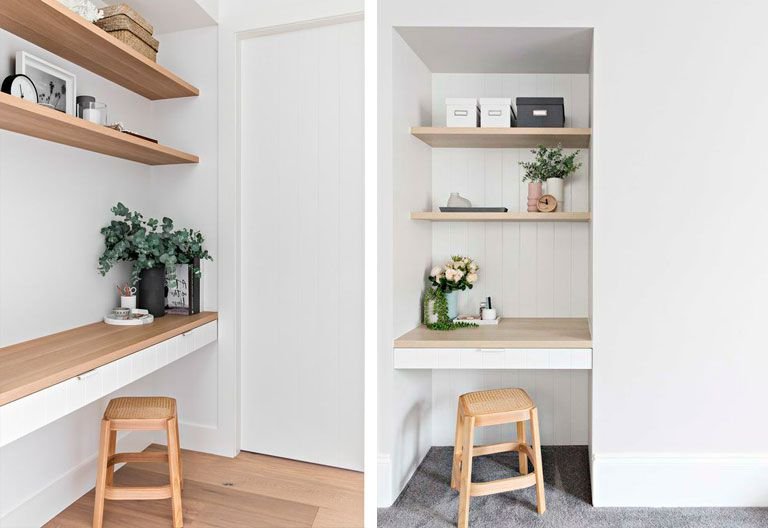
Continue changing the textiles: neutral colored curtains, few cushions without strident colors, jute rugs and ceramic complements.
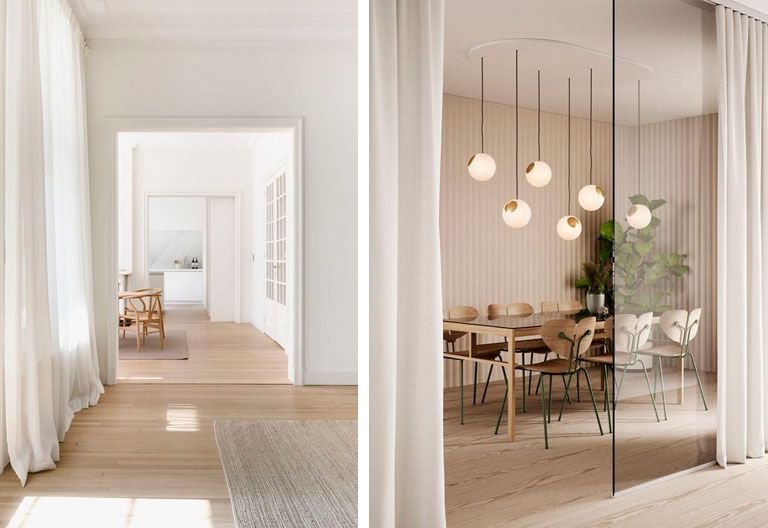
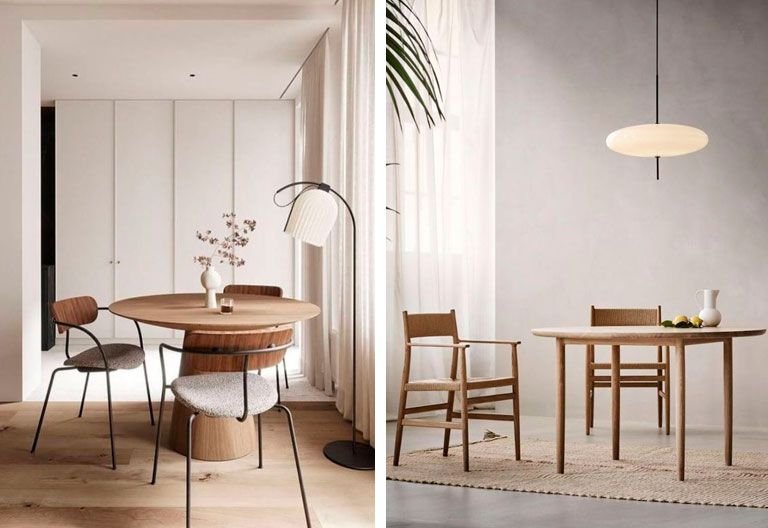
Add natural plants and remember that they can be of medium size or small as flower arrangements.
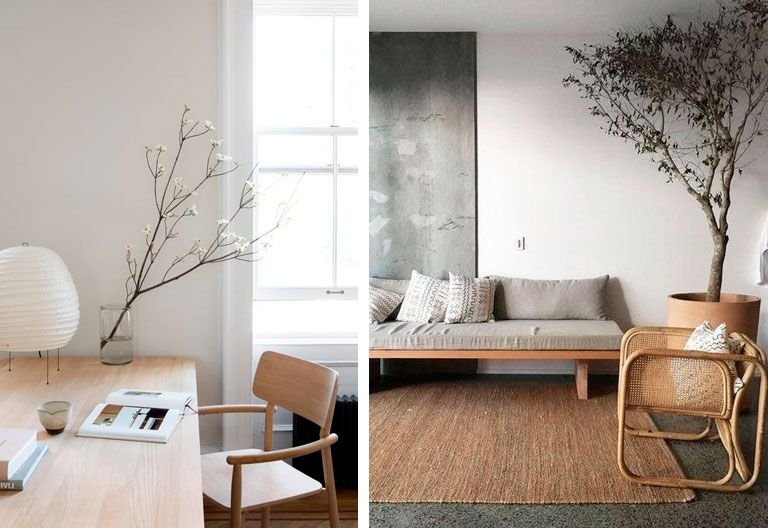
And finally, when the mood and budget allows it, plan an interior design project and subsequent reform to cover the continent, which will include the adaptation of floors, walls, windows, kitchen and bathrooms to finish setting the entire interior with Japandi style.


